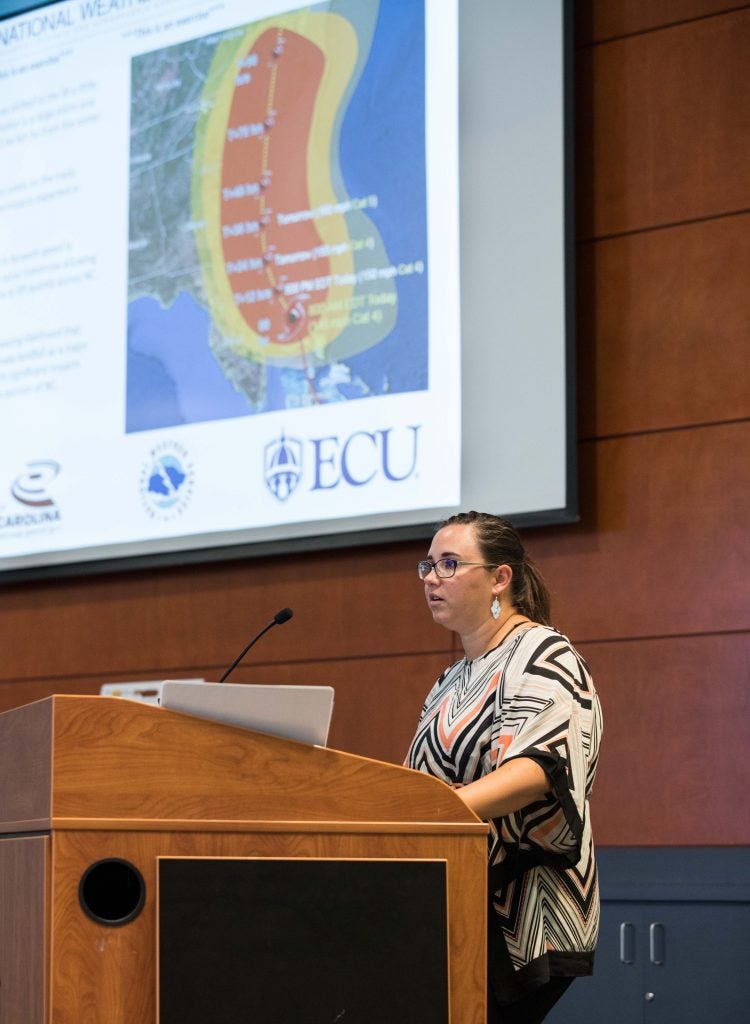ECU participates in hurricane preparedness simulation
The East Carolina University community is no stranger to natural disasters, and making sure the university is prepared for such an event is a never ending cycle of training and planning.
Some of that training took place at ECU Oct. 16-18 during a hurricane preparedness exercise involving nine UNC campuses, FEMA, the National Weather Service and UNC General Administration. Local groups like Vidant Medical Center and Pitt County Emergency Management also took part. The exercise took two years to plan and involved Hurricane Zephyr, a fictitious Category 5 storm heading for eastern North Carolina.

ECU emergency planner Lauren Mink facilitates the Hurricane Zephyr exercise on Oct. 16. (Photo by Rhett Butler)
Lauren Mink, ECU’s continuity and emergency planner, helped coordinate the three-day tabletop exercise and call center drill.
“Tabletops are particularly useful in assessing plans and policies, understanding concepts, identifying strengths and shortfalls, and achieving a change in philosophy if necessary. With a system-wide drill, it is our hope that we can theoretically test the entire system and its capabilities at one time,” said Mink.
The first day of ECU’s exercise took participants from five days before landfall – when the forecast was still uncertain – to 24 hours before imminent landfall on North Carolina’s east coast. Staff discussed when they would decide cancel classes, how to prepare students for potential evacuation, and ready buildings and sensitive research areas for a Category 5 hurricane.
“The drill gave us an opportunity to address very real situations that could impact ECU and eastern North Carolina. We were able to have serious conversations about the best ways to keep our students, faculty and staff safe should these worst case scenarios ever become a reality,” said Chris Stansbury, associate vice chancellor and senior operating officer for student affairs.
The second and third days of the simulated hurricane presented participants with the potential aftermath of such a severe storm: severe flooding; communication and power outages; all major roads blocked; severe structural damage; employees unable to get to campus; parents checking in on students who did not evacuate; and off-campus student and faculty deaths.
“You can never be too prepared. You can never practice too much. This drill was very real, and sadly, could actually happen. I feel like ECU has a strong commitment to the safety of our campus community and this hurricane exercise has shown us that we have some great things in place and also created opportunities for us to improve in other areas,” said Stansbury.
Faculty, staff and community partners talked about how the university would respond to immediate needs and prepare for the long-term effects that could occur after a devastating natural disaster.
Other participating universities took part in tabletop exercises tailored to their locations, and UNC Wilmington staged an evacuation drill that took approximately 40 students from their campus to UNC Greensboro.
Hurricane season begins each year on June 1 and ends Nov. 30.
-by Jamie Smith, ECU News Services